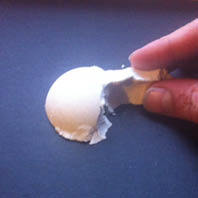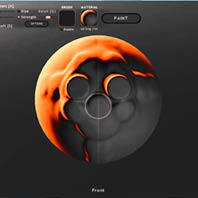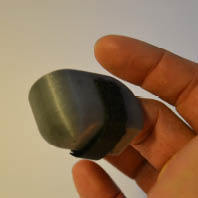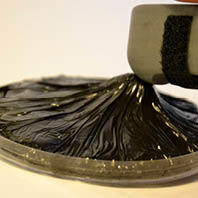Difference between revisions of "User:Emielgilijamse"
| Line 7: | Line 7: | ||
'''Project 1''': ''Exploring bespoke technologies as remediation, adaptions or extensions of the human body'' | '''Project 1''': ''Exploring bespoke technologies as remediation, adaptions or extensions of the human body'' | ||
| + | |||
| + | |||
| + | == Introduction == | ||
| + | |||
'What I wanted to achieve was to find a relevant example of a traditional technique using a modeling methode as used in modeling software.' | 'What I wanted to achieve was to find a relevant example of a traditional technique using a modeling methode as used in modeling software.' | ||
| Line 22: | Line 26: | ||
== Research == | == Research == | ||
| − | + | ''What's the theme?'' | |
| + | |||
| + | Using technology to alter human capabilties. | ||
| + | |||
| + | After reading the article 'How Humans Are Shaping Our Own Evolution' (by D.T. Max, National Geography, issue april 2017), I became acquianted with the existence of Neil Harbisson. He's is known as one of the most famous living human cyborgs of our time. He has a rare condition called achromatopsia; he cannot perceive color. Together with science he now is using a device attached to the back of his head. Not by sight but through vibrations on the back of his skull he can indentify colors. Using technology not only gave him the abilty to indentify his surroundings, he gained an extra sence in a way normal human beings can not. He is able to do something other can not, because of technology. | ||
| + | This example of Neil Harbisson is an interesting way of showing the value of using technology to extent our possibilities. To add devices to our body to make us do things we could not do before. The focus for this project will be on extending the human ability to shape form using the finger as a tool. | ||
| + | |||
| + | ''What's the question?'' | ||
| + | |||
| + | The way Harbisson is helped by technology is an intense example. We can use technology, low- or hightech to increase our capabilities. I want to design and make a device which can be added and removed from the human body. The device will only serve one single purpose. Focussing on the human finger as a tool, I will use simple technology to change the way of using it. | ||
| + | Can I mimic the way of shaping in a digital enviroment, to make a combination between a new way of shaping with a traditional craft? | ||
| + | |||
| + | ''How structuring the research?'' | ||
| + | |||
| + | To find a way to make the project physical, I needed relevant examples. Inspired by the methode designer Jolan van der Wiel is using to shape his collection "Gravity"-stools, I decided to try this technique myself. | ||
| + | |||
| + | ''What tools or methods did I used?'' | ||
| + | |||
| + | ''What is the foreseen result?'' | ||
| + | |||
| + | ''Difference between the foreseen result and the accual result?'' | ||
| + | |||
| + | ''Is the outcome relevant?'' | ||
| + | |||
| + | |||
[[File:Traditioneel.jpg|Shaping by hand.]] [[File:Sculptris.jpg|Using Sculptris.]] | [[File:Traditioneel.jpg|Shaping by hand.]] [[File:Sculptris.jpg|Using Sculptris.]] | ||
| − | |||
| − | |||
Revision as of 12:09, 14 September 2017
Digital Craft: Practice Q9 "How to be human"
"On the body"
Project 1: Exploring bespoke technologies as remediation, adaptions or extensions of the human body
Introduction
'What I wanted to achieve was to find a relevant example of a traditional technique using a modeling methode as used in modeling software.'
At this point I am especially interested in the "craft" in "digital craft'. I decided to interpret the human body as a toolkit. Focusing on the finger, which is giving us the ability to create forms and shape objects in traditional crafts. Looking back in history, the hand and its finger were one of the first and most essential tools used by man to shape and form. Especially looking at ceramics and sculptures, in which our hands and fingers are still essential. But in our digital age we've defined different ways of creating, inspired by our manual methods, but different in possibilties and approach.
Where the traditional ways of shaping materials like clay, direct contact with the material is inevitable, the modern modeling process takes place in a digital enviroment. Software like Meshmixer and Sculptris gives you the possibilty to pull and push an unlimited amount of mass, giving you endless possibilties, which are practically impossible using the traditional ways of shaping by hand. I wanted to design and create an extension of the human finger. Combining traditional ways of shaping, inspired by the modern approach of modeling as seen in free-form modeling software.
Research
What's the theme?
Using technology to alter human capabilties.
After reading the article 'How Humans Are Shaping Our Own Evolution' (by D.T. Max, National Geography, issue april 2017), I became acquianted with the existence of Neil Harbisson. He's is known as one of the most famous living human cyborgs of our time. He has a rare condition called achromatopsia; he cannot perceive color. Together with science he now is using a device attached to the back of his head. Not by sight but through vibrations on the back of his skull he can indentify colors. Using technology not only gave him the abilty to indentify his surroundings, he gained an extra sence in a way normal human beings can not. He is able to do something other can not, because of technology. This example of Neil Harbisson is an interesting way of showing the value of using technology to extent our possibilities. To add devices to our body to make us do things we could not do before. The focus for this project will be on extending the human ability to shape form using the finger as a tool.
What's the question?
The way Harbisson is helped by technology is an intense example. We can use technology, low- or hightech to increase our capabilities. I want to design and make a device which can be added and removed from the human body. The device will only serve one single purpose. Focussing on the human finger as a tool, I will use simple technology to change the way of using it. Can I mimic the way of shaping in a digital enviroment, to make a combination between a new way of shaping with a traditional craft?
How structuring the research?
To find a way to make the project physical, I needed relevant examples. Inspired by the methode designer Jolan van der Wiel is using to shape his collection "Gravity"-stools, I decided to try this technique myself.
What tools or methods did I used?
What is the foreseen result?
Difference between the foreseen result and the accual result?
Is the outcome relevant?




